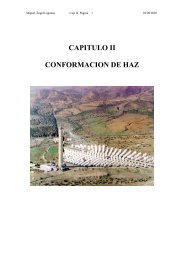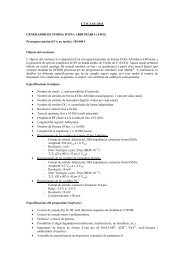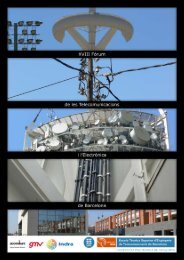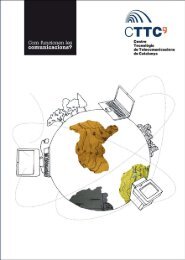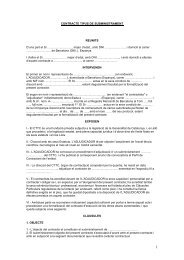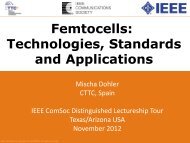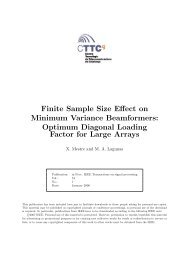innovating communications - CTTC
innovating communications - CTTC
innovating communications - CTTC
You also want an ePaper? Increase the reach of your titles
YUMPU automatically turns print PDFs into web optimized ePapers that Google loves.
Vision and Mission_Statement of the Director_Organization and Management_Research and Demostration_Business Development_Intellectual Property Rights_<br />
Highlights 2007_Research Projects_Technology transfer_Training activities_Partnerships, Cooperation and Communication_Publications_Financial Report<br />
40<br />
FIT-330225-2007-2 MIMOWA<br />
Prof. Ana Pérez_Associate Researcher (UPC)_Radio Communications<br />
Antonio Pascual, PhD_Associate Researcher (UPC)_Radio Communications<br />
Oriol Font_Research Engineer_Engineering Unit<br />
David López_Research Engineer_Engineering Unit<br />
Lluís Ventura_Research Engineer_Engineering Unit<br />
Started: January 2007<br />
Duration: 12 Months<br />
Volume: 108 person-month<br />
Budget: 116,574 euros<br />
Funding: 50 % from The Spanish Ministry, Tourism and Trade (MITYC)<br />
Project manager: Michael Deudonne (Agilent)<br />
Partners:<br />
Centre Tecnològic de Telecomunicacions de Catalunya (<strong>CTTC</strong>), Spain<br />
Universitat Politècnica de Catalunya (UPC), Spain<br />
Telefónica I+D, Spain<br />
Promax, Spain<br />
MIMO technologies for wireless access<br />
Agilent Technologies, Belgium<br />
ST Microelectronics, Belgium<br />
Alcatel SEL, Germany<br />
Infineon, Germany<br />
AWE, Germany<br />
CUAS, Germany<br />
RUNCOM, Israel<br />
OMP, Belgium<br />
Alcatel Lucent, Germany<br />
nSilition<br />
STMicroelectronics, Turkey<br />
The Medea+ 2A103 MIMOWA project aims at simulating, implementing, validating and evaluating wireless MIMO (Multiple Input<br />
Multiple Output) building blocks (IP, Silicon and FPGA content) for Cellular 3G (Long Term Evolution), WiMAX (Fixed and mobile)<br />
and WiFi air interfaces. The project aims at three-fold, to explain the advantages of MIMO to a broad public, to perform state of<br />
the art analysis of the real MIMO advantages, and also to anticipate future design challenges. The program will start with MIMO<br />
systems simulations, focus on the design and implementation of these building blocks and finish by validating and demonstrating<br />
the implementations. These demonstrations will have two-fold ambitions, to explain the advantages of MIMO to a broad public,<br />
but also to perform state of the art analysis of the real MIMO advantages. Finally, a great care is taken in order to also anticipate<br />
future design challenges by having a work package focusing on the long-term MIMO evolutions.




